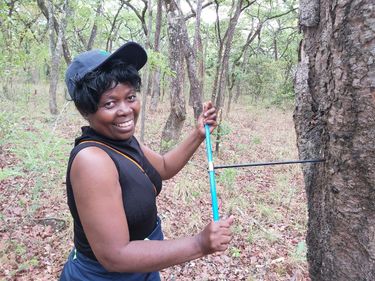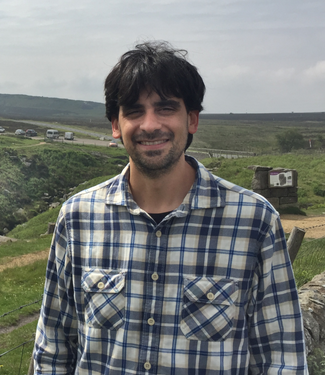
Sessions in which Inga K. Homfeld participates
Tuesday 28 June, 2022
Floods and droughts have recently worsened in the Fraser River Basin (FRB), British Columbia, causing significant impacts to western Canadian economy, ecosystems, and societal wellbeing, as well as the costliest natural disaster in the province’s history in 2021. These extreme events present a major management challenge since the FRB is susceptible to unregulated spring flood and summer drought events, even in the same year. Meanwhile observational streamflow datasets are both short and po...
Wednesday 29 June, 2022
Floods and droughts have recently worsened in the Fraser River Basin (FRB), British Columbia, causing significant impacts to western Canadian economy, ecosystems, and societal wellbeing, as well as the costliest natural disaster in the province’s history in 2021. These extreme events present a major management challenge since the FRB is susceptible to unregulated spring flood and summer drought events, even in the same year. Meanwhile observational streamflow datasets are both short and po...
Rescheduled from June 28th to June 29th
Sessions in which Inga K. Homfeld attends
Tuesday 28 June, 2022
Africa is faced with a number of challenges including climate change and ecological disturbance due to various anthropogenic activities. These problems adversely affect the forests and also ecosystem services. My appreciation for the forests motivated me to pursure my undergraduate studies in Forestry. I first applied dendrochronology during my PhD research which focused on understanding the climate change vulnerability of the Zambezi teak forests in Zambia. However, lack of research facil...
The past and future of forests are unequivocally controlled and determined by global climate. Constraining the uncertainties within this multifaceted relationship has been the focus of vast research efforts. A spatial perspective, however, is often neglected. Using the geographical constraints (e.g. latitude, altitude) and climatic drivers of tree dynamics as a benchmark, we address the spatial patterns and changes of forest growth at a continental scale and quantify the forest growth resp...
It is generally assumed that tree-rings, and their vessel diameters, are wider in warmer and wetter years. To maintain constant conductance per unit leaf area as trees grow taller, stem vessels should widen from tip to base. But wider vessels are more susceptible to embolism, so taller plants are progressively becoming more vulnerable to drought or cold as they grow. The traditional theory of vessel hydraulic adaptation postulates that vessel diameter is affected by climate, with cold envi...
Improving our understanding of the carbon cycle is key to addressing the challenges of climate change. In this study, we investigated the relationships between intra and inter-annual climate variations, carbon fluxes, and the xylem biomass in an 80-year plantation of Pinus strobus at Turkey Point, Ontario, Canada. From eddy covariance tower, we obtained daily Gross Primary Production (GPP), precipitation and air temperature for the period 2003-2018. To determine inter-and intra-annual xyle...
Ring-width (RW) and Blue Intensity (BI) parameters (earlywood - EWB, inverted latewood – LWBinv, and delta - DB) were measured from samples of Araucaria araucana from six sites in northern Patagonia, Argentina. The distance between the most southerly and northerly sites is ca. 130 kms. Despite a much weaker between-tree signal for the BI parameters than RW, principal component analysis identifies a much stronger regional between-site signal for the BI parameters. Split period correlation r...
The Laacher See Eruption (LSE) ranks among Europe’s largest Upper Pleistocene volcanic events. Although its tephra deposits represent an important isochron for the synchronization of proxy archives at the Late Glacial to early Holocene transition, uncertainty in the eruption age has prevailed. Combined analysis of high-precision ring width and radiocarbon measurements from individual rings of trees that were killed during volcanic eruptions and buried by their deposits can provide eruption...
"Little is known about the impact of volcanoes on trees from the Southern Hemisphere. In this study, we investigated whether volcanic signals could be identified in ring widths from eight dendrochronological species from New Zealand, using superposed epoch analysis. We found that most species are good recorders of volcanic dimming and that the magnitude and persistence of the post-event response can be broadly linked to plant life history traits - whether the species responds as a 'stress ...
Wednesday 29 June, 2022
Forty years ago Dr. Tom Yanosky, a research botanist with the US Geological Survey, reported that ash trees growing along the Potomac River contained rings with abnormal wood anatomy caused by flood damage. Dr. Yanosky recommended these rings — which he dubbed “flood rings” — could be used to estimate the date, seasonal timing, and (most importantly) peak stage of past floods. Since that discovery, flood rings have been identified for forested river systems in eastern France, central Canad...
In western Canada, internal natural variability is the dominant source of uncertainty for the climate model projection of precipitation and related variables. Tree-ring records capture this natural variability and also enable testing of the capacity of climate models to simulate significant modes of variability. We compare millennial tree-ring reconstructions of the weekly flows of the Athabasca and North Saskatchewan Rivers to weekly flows from a hydrological model forced with climatology...
Dendroclimatological reconstructions are often extended into the past with wood from historical buildings. However, the varying, though frequently unknown origin of timbers not only affects the growth rate but also the climate response of individual tree-ring samples. We tested nine supervised machine learning algorithms for the geographical provenancing of 99 historical tree-ring samples. We sampled 143 living larch (Larix decidua Mill) trees at seven sites along an elevational gradient f...
This is a mandatory (!) .... and FREE (!!) cocktail & award ceremony (!!!)(in replacement of the Banquet formula)->->->->->->->->->->->->->->->->->->After a great summer day of scientific and urban discoveries in our beloved MTL, we wish to bring together all the AmeriDendro community in one place and congratulate the TRS awardees for their remarkable achievements! -Bonsinsegna award-Fr...
Thursday 30 June, 2022
How old are tropical trees? This fundamental question has long driven the curiosity of laymen and scientists. But only recently, a great number of studies conducted by many brave dendrochronologists resulted in a significant tree-ring-based knowledge that allows us to start accurately estimating tree ages across the globe. As science goes, not only knowing the longevity of tropical trees is essential to understanding forest dynamics and its role in biogeochemical cycles, but one must also ...
The assessment of pre-instrumental climate variability during the Common Era (CE) has been a key element of IPCC reports and was recently emphasized by showing a single temperature reconstruction as the first figure in the 2021 Summary for Policymakers (SPM). This reconstruction is derived from dozens of proxy records including tree-rings, corals, ice cores and sediments, and displays the course of global temperatures over the past 2000 years. Show casing a single study for paleoclimate co...
Tree-ring records have been used extensively to reconstruct past streamflow variability. Annually resolved estimates for several centuries prior to observations, and in some cases millennia, have been produced from dendroclimatic proxies. However, despite an often strong hydroclimatic signal embedded in the rings, some factors limit the skill of such reconstructions, including human interference with the hydrological cycle. We examine the relationship between local output...
Dendrochronological archives in the tropics of the Americas have been under-studied for a long time. Some of the challenges include the Identification of tree-ring boundaries in certain tree species, absence of winter dormancy associated to low temperatures in most of the cases, and logistic difficulties of fieldwork in remote sites. However, part of the slow progress is also related to the fact that historically much less resources have been inv...
A gap of millennial tree-ring data suitable for dendroclimatology has long been evident in the North American boreal forest. In my talk, I will describe the adaptive approach we have developed to build and improve a data network for millennial dendroclimatology in the eastern Canadian taiga. Recurrence of stand replacing wildfires is the most important constrain to the elaboration of long tree ring chronologies, which can only be developed away from regions ...



